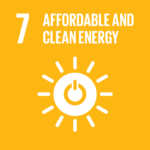Southeast Asia, embracing the green revolution, combats climate change with an innovative roadmap to sustainability, leveraging renewable resources, green infrastructure, and electric vehicles.
Over the past twenty years, Southeast Asia has experienced considerable environmental damage, some of the worst annually across the globe. This includes the destruction of ocean biodiversity, loss of forests and natural habitats, and severe haze pollution. These problems are largely due to the region’s massive economic growth. As the 11-nation economy grows, so too does its industrial output, urbanization, and greenhouse gas emissions. What’s more concerning is that as demands for CO2 emission products continue to grow, the region can expect increasing temperatures, droughts, heatwaves, sea-level rise, and more frequent severe typhoons.
RELEVANT SUSTAINABLE GOALS



The Green Infrastructure Revolution
A report by Bain suggests that the entire Southeast Asian economy could lose 17% to 37% of its future GDP by 2050 if these environmental issues aren’t addressed. Currently, the region depends heavily on resource and carbon-intensive industries, accounting for approximately 45% of the entire regional economy. However, there’s a clear solution: driving down the majority of climate emissions in the region while creating new and substantial opportunities for the 11-nations, potentially worth over $1 trillion dollars by 2030.
Southeast Asia’s economy continues to grow, leading to increasing demands. As the middle class expands, people are more likely to travel, purchase vehicles, and other CO2-producing goods. Projections suggest that transportation, along with industry, will be the biggest energy demand by 2040. However, the answer to these issues isn’t to restrict growth but to shift towards renewable resources and greener practices.
This shift towards greener infrastructure starts with governments and private institutions switching their investments from carbon-intensive markets to greener options like solar, wind, and hydropower. The ASEAN bloc aims to grow solar, wind, geothermal, and biomass generation by 15%, 12%, 25%, and 10% annually by 2040, respectively. We’re already seeing this transition in places like Vietnam, with the construction of two mega offshore wind farms, Indonesia’s $22.5 billion Kayan Hydro Power Plant, and the Philippines’ $5 billion Solar Power Plant program.
The expected shift in the vehicle market towards electric vehicles (EVs) is another significant step. This shift is driven by consumer demand and government initiatives, with consumers increasingly preferring greener options and governments creating investment opportunities. In Indonesia, for instance, the electric and battery industry was the largest source of foreign investments in 2020, accounting for over 70%. Meanwhile, Thailand aims to convert 30% of its total car production to EVs by 2030, and Vietnam projects to start exporting EVs worldwide in 2022.
Despite these promising developments, substantial work is still required to fully transition to more sustainable practices. Reports suggest that we need to invest at least $2 trillion dollars between 2021 and 2030 into key sectors like energy solutions, green buildings and construction, waste and water management, sustainable materials, and sustainable food systems. Achieving this requires stronger government support, improved international investments in green sectors, and an integrated, digitally-driven economy to ensure efficiency. All these efforts are crucial to bring us closer to a more sustainable world.
You may also be interested in :
Mangrove Forest Loss Is Slowing Toward A Halt, New Report Shows


